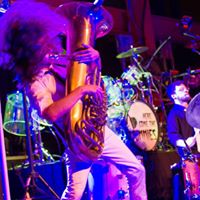John D Wentz
age ~50
from Vallejo, CA
- Also known as:
-
- John D Wenst
- John Z
John Wentz Phones & Addresses
- Vallejo, CA
- Valley Springs, CA
- Lathrop, CA
- Alameda, CA
- Napa, CA
- Oakland, CA
- San Francisco, CA
- Pleasanton, CA
- Livermore, CA
- 128 Claremont Ave, Vallejo, CA 94590
Lawyers & Attorneys

John Wentz - Lawyer
view sourceISLN:
911623558
Admitted:
1975
University:
University of California, Hastings College, San Francisco CA
Name / Title
Company / Classification
Phones & Addresses
JAW PROFESSIONAL ENVIRONMENTAL SOLUTIONS, LLC
Unknown Historic
ALASKA HOUSE INC
Resumes

Artist @ Wentzart.net
view sourcePosition:
Artist at Wentzart.net at Self Employed
Location:
San Francisco, California
Industry:
Fine Art
Work:
Self Employed - San Francisco Bay Area since 2006
Artist at Wentzart.net
Academy of Art University - San Francisco Bay Area 2006 - Jun 2012
Instructor
Artist at Wentzart.net
Academy of Art University - San Francisco Bay Area 2006 - Jun 2012
Instructor
Education:
Academy of Art University 2000 - 2006
BFA, Fine Art Drawing/Painting
BFA, Fine Art Drawing/Painting
Skills:
Visual Storytelling
Painting
Drawing
Art
Illustration
Illustrator
Visual Arts
Fine Art
Oil Painting
Watercolor
Photoshop
Sculpture
Graphic Design
After Effects
Storyboarding
Digital Art
Contemporary Art
Murals
Character Animation
Digital Illustration
Digital Painting
Art Education
Photography
Digital Photography
Teaching
Painting
Drawing
Art
Illustration
Illustrator
Visual Arts
Fine Art
Oil Painting
Watercolor
Photoshop
Sculpture
Graphic Design
After Effects
Storyboarding
Digital Art
Contemporary Art
Murals
Character Animation
Digital Illustration
Digital Painting
Art Education
Photography
Digital Photography
Teaching

Artist @ Wentzart.net
view sourcePosition:
Artist at Wentzart.net at Self Employed
Location:
San Francisco, California
Industry:
Fine Art
Work:
Self Employed - San Francisco Bay Area since 2006
Artist at Wentzart.net
Academy of Art University - San Francisco Bay Area 2006 - Jun 2012
Instructor
Artist at Wentzart.net
Academy of Art University - San Francisco Bay Area 2006 - Jun 2012
Instructor
Education:
Academy of Art University 2000 - 2006
BFA, Fine Art Drawing/Painting
BFA, Fine Art Drawing/Painting
Skills:
Visual Storytelling
Painting
Drawing
Art
Painting
Drawing
Art

John Wentz
view sourceLocation:
United States

John Wentz
view sourceLocation:
United States

John Wentz
view sourceLocation:
United States

Commercial Agent At Kw Commercial
view sourcePosition:
Investor/Owner at Keller Williams Realty of Manatee, Commercial Agent at KW Commercial
Location:
Bradenton, Florida
Industry:
Real Estate
Work:
Keller Williams Realty of Manatee - 4520 SR 64 East Bradenton Fl , 34208 since Jul 2004
Investor/Owner
KW Commercial - 4520 SR 64 East Bradenton, Fl 34208 since Jul 2004
Commercial Agent
Investor/Owner
KW Commercial - 4520 SR 64 East Bradenton, Fl 34208 since Jul 2004
Commercial Agent
Education:
Nova Southeastern University 1993 - 1995
Us Patents
-
Finger Operated Digital Input Device
view source -
US Patent:57060266, Jan 6, 1998
-
Filed:Mar 13, 1995
-
Appl. No.:8/404135
-
Inventors:Robert Hormann Kent - Redwood City CA
John Dyer Wentz - New York NY -
International Classification:G09G 500
-
US Classification:345156
-
Abstract:A digital input device has a thimble worn on a finger and operated as a mouse for displacement encoding or as a pointer for angular encoding, using a base unit. The thimble can also be attached to a stylus to form a tracing pen or joystick handle. A sensor preferably includes a contact roller at an end of the thimble that rotates with movement over a surface. The sensor emits a signal as a function of incremental displacement of the sensor over a surface, in X and Y directions. The sensor couples to the base unit at a universal joint and the base unit has a cup-shaped contact surface for encoding angular displacement around the universal joint, using displacement of the sensor over the cup-shaped surface. The contact roller is mechanically arranged to pass a coding strip having reflective, transmissive or magnetic stripes before a sensing element. The sensor can be pivoted back on the finger to enable typing.
-
Single Eyepiece Binocular Microscope
view source -
US Patent:48180840, Apr 4, 1989
-
Filed:Jul 14, 1988
-
Appl. No.:7/220350
-
Inventors:John B. Wentz - Oakland CA
-
International Classification:G02B 2136
G02B 2100 -
US Classification:350508
-
Abstract:A single eyepiece binocular microscope includes a microscope housing a generally horizontal base and housing several optical elements. An objective lens is positioned immediately above the specimen and adjacent the base plane. A first mirror, vertically above the objective lens, redirects the light down and away from the observer along a path to intersect a second mirror positioned adjacent the base plane. The second mirror redirects the light along a third light path up and towards the observer for intersection with a rear projection screen. A viewing chamber shields the screen from ambient light for a brighter image and for an illusion of depth. A second lens, positioned just behind the real image of the first lens, provides a real image at the screen. A third lens at the viewing opening creates a virtual image between the second mirror and the rear projection screen to aid the impression of depth. The arrangement provides an impression to the viewer of looking into the instrument and at the specimen, an important consideration for use by children.
-
Microscope Housing
view source -
US Patent:D391503, Jul 10, 1990
-
Filed:Apr 26, 1988
-
Appl. No.:7/186980
-
Inventors:John B. Wentz - Oakland CA
-
US Classification:D16131
Classmates

John Wentz
view sourceSchools:
Canyon High School Anaheim CA 1982-1986
Community:
Stephen Hogie, Mike Maxam, Rory Moore

John Wentz
view sourceSchools:
Virginia Episcopal High School Lynchburg VA 1961-1963
Community:
Lisa Jessen, Garrett Jeter

John Wentz
view sourceSchools:
Virginia Episcopal High School Lynchburg VA 1959-1963
Community:
Lisa Jessen, Garrett Jeter

John Wentz
view sourceSchools:
Gary High School Gary MN 1965-1969
Community:
Gary Dekko, Terry Munson, Roberta Sullivan

John Wentz
view sourceSchools:
Green Camp High School Green Camp OH 1944-1947

John Wentz, Bountiful Hig...
view source
John Wentz, Ephrata High ...
view sourceGoogleplus

John Wentz
Work:
Community Christian Church - Small Group Director
South Side Christian Church - Campus Pastor
University Christian Church - Campus Minister
South Side Christian Church - Campus Pastor
University Christian Church - Campus Minister
Education:
Lincoln Christian College and Seminary - BA Church Planting/Evangelism, Lincoln Christian College and Seminary - MA Historical Theology/Church History

John Wentz
Work:
Www.wentzart.net - Artist (2012)
Tagline:
Painter. Human.

John Wentz

John Wentz

John Wentz

John Wentz

John Wentz

John Wentz
Flickr

John Wentz
view source
John Wentz
view source
John Wentz
view source
John Wentz
view source
John Wentz
view source
John William Wentz
view source
John Wentz
view source
John Wentz
view sourceYoutube
Myspace
Get Report for John D Wentz from Vallejo, CA, age ~50
















